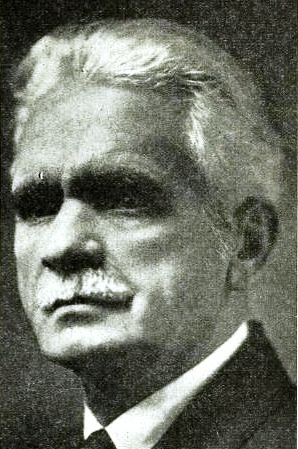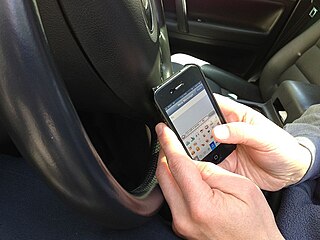
The Book of Mormon is a religious text of the Latter Day Saint movement, which, according to Latter Day Saint theology, contains writings of ancient prophets who lived on the American continent from 600 BC to AD 421 and during an interlude dated by the text to the unspecified time of the Tower of Babel. It was first published in March 1830 by Joseph Smith as The Book of Mormon: An Account Written by the Hand of Mormon upon Plates Taken from the Plates of Nephi. The Book of Mormon is one of the earliest unique writings of the Latter Day Saint movement. The denominations of the Latter Day Saint movement typically regard the text primarily as scripture and secondarily as a record of God's dealings with ancient inhabitants of the Americas. The majority of Latter Day Saints believe the book to be a record of real-world history, with Latter Day Saint denominations viewing it variously as an inspired record of scripture to the lynchpin or "keystone" of their religion. Some Latter Day Saint academics and apologetic organizations strive to affirm the book as historically authentic through their scholarship and research, but mainstream archaeological, historical, and scientific communities have discovered little to support the existence of the civilizations described therein, and do not consider it to be an actual record of historical events.
The Lamanites are one of the four ancient peoples described as having settled in the ancient Americas in the Book of Mormon, a sacred text of the Latter Day Saint movement. The Lamanites also play a role in the prophecies and revelations of the Doctrine and Covenants, another sacred text in the Latter Day Saint movement.

According to most adherents of the Latter Day Saint movement, the Book of Mormon is a 19th-century translation of a record of ancient inhabitants of the American continent, which was written in a script which the book refers to as "reformed Egyptian". This claim, as well as all claims to historical authenticity of the Book of Mormon, are rejected by non-Latter Day Saint historians and scientists. Linguistically based assertions are frequently cited and discussed in the context of the subject of the Book of Mormon, both in favor of and against the book's claimed origins.

Mormon is believed by members of the Church of Jesus Christ of Latter-day Saints to be a prophet-historian and a member of a tribe of indigenous Americans known as the Nephites, one of the four groups described in the Book of Mormon as having settled in the ancient Americas.

Brigham Henry Roberts was a historian, politician, and leader in the Church of Jesus Christ of Latter-day Saints. He edited the seven-volume History of the Church of Jesus Christ of Latter-day Saints and independently wrote the six-volume Comprehensive History of the Church of Jesus Christ of Latter-day Saints. Roberts also wrote Studies of the Book of Mormon—published posthumously—which discussed the validity of the Book of Mormon as an ancient record. Roberts was denied a seat as a member of United States Congress because of his practice of polygamy.

According to the Book of Mormon, Alma, the son of Alma was a Nephite prophet often referred to as Alma the Younger to distinguish him from his father, who is often referred to as Alma the Elder. These appellations, "the Younger" and "the Elder," are not used in the Book of Mormon; they are distinctions made by scholars, useful because both individuals were prominent during the same time period in the Book of Mormon's story and filled a similar cultural and religious role. Alma is the namesake of the Book of Alma.

Mobile phone use while driving is common but it is considered dangerous due to its potential for causing distracted driving and subsequent crashes. Due to the number of crashes that are related to conducting calls on a phone and texting while driving, some jurisdictions have made the use of calling on a phone while driving illegal in an attempt to curb the practice, with varying levels of efficacy. Many jurisdictions have enacted laws making handheld mobile phone use illegal. Many jurisdictions allow use of a hands-free device. Driving while using a hands-free device has been found by some studies to provide little to no benefit versus holding the device itself and carrying on a conversation. In some cases restrictions are directed only at minors, those who are newly qualified license holders, or to drivers in school zones. In addition to voice calling, activities such as texting while driving, web browsing, playing video games, or phone use in general may also increase the risk of a crash.

The Book of Mormon Movie, Volume 1: The Journey is a 2003 American adventure drama film directed by Gary Rogers and written by Rogers and Craig Clyde. A film adaptation of the first two books in the Book of Mormon, a religious text of scripture, the film was given a limited theatrical release on September 12, 2003.
Matt Richtel is an American writer and journalist for The New York Times. He was awarded the 2010 Pulitzer Prize for National Reporting for a series on distracted driving.

The Spalding–Rigdon theory of Book of Mormon authorship is the theory that the Book of Mormon was plagiarized in part from an unpublished manuscript written by Solomon Spalding. The theory first appeared in print in the book Mormonism Unvailed [sic], published in 1834 by E. D. Howe. The theory is that a Spalding manuscript was stolen by Sidney Rigdon, who used it in collusion with Joseph Smith and Oliver Cowdery to produce the Book of Mormon. Although Rigdon claimed that he was converted to the Latter Day Saint movement through reading the Book of Mormon, Howe argued that this story was a later invention to cover the book's true origins.

Moroni, according to the Book of Mormon, was the last Nephite prophet, historian, and military commander who lived in the Americas in the late fourth and early fifth centuries. He is later known as the Angel Moroni, who presented the golden plates to Joseph Smith, who translated the plates upon which the Book of Mormon was originally written.

Many members of the Latter Day Saint movement believe that the Book of Mormon is historically accurate. Most, but not all, Mormons hold the book's connection to ancient American history as an article of their faith. This view finds no confirmation outside of Mormonism in the broader scientific community. Mainstream archaeological, historical, and scientific communities do not consider the Book of Mormon an ancient record of actual historical events.

There are several explanations as to the origin of the Book of Mormon. Adherents to the Latter Day Saint movement view the book as a work of divinely inspired scripture, which was written by ancient prophets in the ancient Americas. Non-Mormon theories of authorship propose that it is solely the work of man.

Joel Hills Johnson was a Latter-day Saint missionary and hymn writer, known for being the author of "High on the Mountain Top". Johnson was also the founder of Enoch, Utah.

The standard works of Mormonism—the largest denomination of which is the Church of Jesus Christ of Latter-day Saints —have been the subject of various criticisms. Latter-day Saints believe the Book of Mormon is a sacred text with the same divine authority as the Bible; both are considered complementary to each other. Other Mormon sacred texts include the Pearl of Great Price and Doctrine and Covenants, which are also recognized as scripture. Religious and scholarly critics outside Mormonism have disputed Mormonism's unique scriptures, questioning the traditional narrative of how these books came to light and the extent to which they describe actual events. Critics cite research in history, archeology, and other disciplines to support their contentions.

Texting while driving, also called texting and driving, is the act of composing, sending, or reading text messages on a mobile phone while operating a motor vehicle. Texting while driving is considered extremely dangerous by many people, including authorities, and in some places has either been outlawed or restricted. As a form of distracted driving, texting while driving significantly increases the chances that a driver will be involved in a motor vehicle accident.

The origins, authenticity, and historicity of the Book of Mormon have been subject to considerable criticism from scholars and skeptics since it was first published in 1830. The Book of Mormon is a sacred text of the Latter Day Saint movement, which adherents believe contains writings of ancient prophets who lived on the American continent from approximately 2200 BC to AD 421. It was first published in March 1830 by Joseph Smith as The Book of Mormon: An Account Written by the Hand of Mormon upon Plates Taken from the Plates of Nephi, who said that it had been written in otherwise unknown characters referred to as "reformed Egyptian" engraved on golden plates that he personally transcribed. Contemporary followers of the Latter Day Saint movement typically regard the text primarily as scripture, but also as a historical record of God's dealings with the ancient inhabitants of the Americas.

Steven L. Peck is an evolutionary biologist, poet, and novelist. His literary work is influential in Mormon literature circles. He is a professor of biology at Brigham Young University (BYU). He grew up in Moab, Utah and lives in Pleasant Grove, Utah.

Distracted driving is the act of driving while engaging in other activities which distract the driver's attention away from the road. Distractions are shown to compromise the safety of the driver, passengers, pedestrians, and people in other vehicles.
A textalyzer is a proposed device that would allow the police to detect illegal text messaging while driving. The device has been promoted as a means of reducing distracted driving. The device would be used by police officers who suspect that a driver has been texting while driving using similar procedures currently in place for drivers suspected of driving under the influence. The device would be connected to the driver's mobile phone and would scan the phone for calls, e-mails, or text messages sent when the driver would have been operating the vehicle.









